Capel Dewi is a small rural village, which lies on the B4459, about two miles north-east of Llandyssul. The men of the parish who fell during both world wars are commemorated on the village War Memorial, which is situated on the cross-roads next to Capel Dewi Church. The memorial commemorates the twelve men of the parish who fell during the Great War, and was originally unveiled on 26 September 1920 by Mr Douglas Logan Stewart, of Allt y Rodyn, and dedicated by Reverend M. Jones, Vicar of Llandyssul. The name of another man who fell during World War Two was obviously added later.
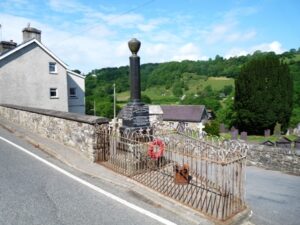
The Great War, 1914-1918
Herbert Henry Bardwell, Private, 35401, South Wales Borderers. Herbert was born in Stratford, Essex, probably the son of John and Ann Bardwell, of 22, Giraud Street, Poplar. He had moved to Llandyssul prior to the war, working for the James family at Corsyfran. He enlisted at Lampeter into the 12th Battalion, South Wales Borderers, which was attached to 119 Brigade, 40th (Bantam) Division. The Division moved to France in June 1916 and took over positions in the line near Loos, where they remained until moving to the Somme later that year, where they fought at the Battle of the Ancre. They spent their first winter in the trenches of 1916/17 on the Somme, and followed the German withdrawal to the Hindenburg Line in March 1917. They remained in the area for the rest of the year, which is where Herbert was killed in action on 6 May 1917, aged 20. His body was never found, and so he is remembered on the Thiepval Memorial, France.
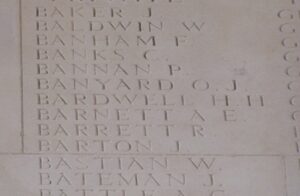
Victor Arthur John Blake, Private, 29117, South Wales Borderers. Victor was the son of Arthur and Alice Blake, of 23, St. Alphonsus Road, Clapham, London. Victor had moved to Blaenpant, Llandyssul by 1912, where he was in service. He married Ada Maud Hobbs in 1916, and the young couple briefly set up home together at Blaenpant. Victor enlisted at Brecon in January 1917 into the South Wales Borderers, and after training was posted to the 2nd Battalion, South Wales Borderers, which was in France attached to 87 Brigade, 29th Division. In the spring of 1917 the division fought at the Battle of the Scarpe, which was part of the Arras Offensive, and then moved further north to Ypres, where it was set to take part in the Battle of Langemarck. By 16 August the 2nd SWB had crossed the Steenbeek, and moved into positions near Langemarck, tasked with capturing Sentiere Farm. During the early hours of 16 August 1917 the battalions objectives had been attained, but at heavy cost. Among the 170 casualties suffered by the battalion, Victor had been killed. He was just 20 years old, and is commemorated on the Tyne Cot Memorial, Belgium.
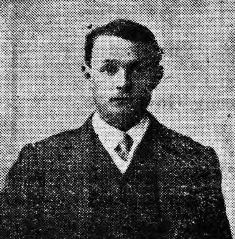
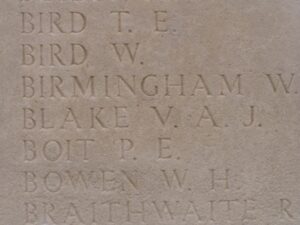
Thomas Collier, Private, 18550, East Lancashire Regiment. Thomas was born at Folkestone, and resided at Cwmeinon, Llandyssul prior to the war, where he worked for Evan James. He enlisted at Llandyssul into the Welsh Regiment, and later transferred into the 6th Battalion, East Lancashire Regiment. The Battalion was attached to 38 Brigade, 13th (Western) Division. On 16 June 1915 the Battalion left Avonmouth for Alexandria, and on 7 July 1915 landed at Cape Helles, Gallipoli. They moved to ANZAC Cove on 3 August, and fought there in the Battle of Sari Bair. Thomas was killed in action at Sari Bair on 9 August 1915. He has no known grave, and so is remembered on the Helles Memorial, Gallipoli.
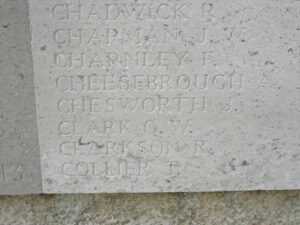
George Jones, Driver, T/2055, Army Service Corps. George was the son of David and Anne Jones, of South Lodge, Alltyrodyn, Llandyssil. He worked as a miner at Ton Pentre prior to enlisting on 15 April 1915 into the Welsh Border Brigade, Army Service Corps, which was attached to the 53rd (Welsh) Division. He served briefly at Gallipoli with the 53rd (Welsh) Division, but was taken ill soon after arriving there and on 15 June 1915 was hospitalised. George was found to have contracted tuberculosis, and was discharged from the army as medically unfit on 25 August 1916, He died of tuberculosis on 26 February 1919, aged 32. Nothing further can yet be traced of him, as he is not commemorated by the CWGC, but his brother, William Robert Jones, died in France in 1918. George’s case has recently been submitted to the CWGC as a result of my research.
John Benjamin Jones, Private, 5539, Royal Fusiliers. John was the son of Thomas and Elizabeth Jones, of Llwynrhydowen, Llandyssul. He lived in Marylebone prior to the war, and enlisted at London into the 9th Battalion, Royal Fusiliers. They formed part of 36 Brigade, 12th (Eastern) Division, and landed at Boulogne on 31 May 1915, taking over the line at Ploegsteert Wood. They then moved south and fought in the Battle of Loos, and remained there until March 1916. By June 1916 they were in position at the Somme, and attacked Ovillers on 2 July 1916. They fought at Pozieres and Le Transloy before being moved to the Arras area, where they fought in the March 1917 Battle of Arras. John was killed in action here, during the Battle of the Scarpe, on 9 April 1917. He was 22 years old, and is buried in Ste. Catherine British Cemetery, France.
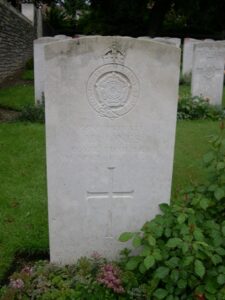
William Robert Jones, Private, 341, East Surrey Regiment. William was born at Newington, Surrey, the son of David and Anne Jones, later of South Lodge, Alltyrodyn, Llandyssil. He enlisted into the 9th Battalion, East Surrey regiment, which was attached to 72 Brigade, 24th Division. They moved to France during August, 1915 and marched to positions near Loos, where they took up reserve positions for the main Battle of Loos. The Division were sent into battle on 26 September 1915 at Loos and suffered terrible casualties due to not being properly trained for battle, and were pulled from the line until the following year. In 1916 they took part in the Battle of the Somme, and fought at Delville Wood and Guillemont, before moving north of Arras in early 1917. In April and May 1917 they fought at the Battle of Vimy, alongside the Canadian Corps, and in June they moved to positions south of Ypres, where they fought during the Battle of Messines. After the successful capture of Messines Ridge, the Division moved further north, and fought at the Battles of Pilckem and Langemarck during Third Ypres. The Division then moved to positions north of St. Quentin over the winter of 1917/18, which is where William died of sickness on 23 February 1918. He was 45 years old, and is buried in Tincourt New British Cemetery, France. His brother George died in 1919 as a result of his service during the war.
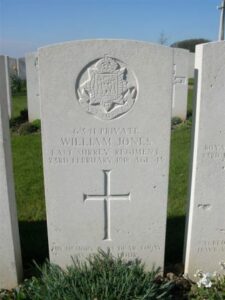
Duncan Ian Bowen Lloyd, Lieutenant, Indian Army. Duncan was born on 16 March 1886, the son of Charles and Margaret MacFie Lloyd (nee Campbell), of Waunifor, Maesycrugiau. He was educated at Oswestry Grammar School, and Clifton College before attending Sandhurst in 1905. Duncan was gazetted Second Lieutenant in 1906, and accepted a Commission into the Indian Army in 1907, seeing service in India. At the outbreak of war he was Quartermaster of the 1st Battalion, 5th Ghurkha Rifles, which had served in the Middle East before landing on Gallipoli. Duncan was placed in charge of the 1/6th Ghurkha Rifles there, but was killed in action at Damajelik Bair, during the Defence of Helles on 14 August 1915, aged 29. He was originally buried where he fell, but his grave was lost during further fighting, and today Duncan is remembered on the Helles Memorial. Duncan was mentioned in Sir Ian Hamilton’s Despatches on 17 March 1917, for his gallant services at Gallipoli.
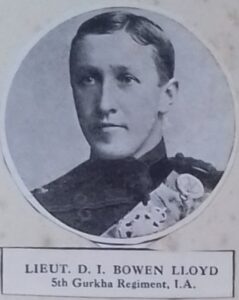
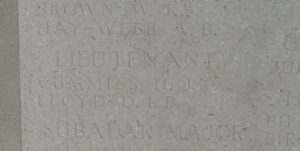
Gwion Llewellyn Bowen Lloyd, Captain, Dorsetshire Regiment. Gwion was born on 21 February 1888, the son of Charles Lloyd, and of Margaret MacFie Lloyd (nee Campbell), of Waunifor, Maesycrugiau. Gwion had been commissioned into the Dorsetshire Regiment, and served with their 5th Battalion, attached to 34 Brigade, 11th (Northern) Division. The Division came into existence of Army Order No.324, issued on 21 August 1914, authorising the formation of the six new Divisions of K1. It was formed of volunteers, under the care of the War Office. Initially without equipment or arms of any kind, the recruits were judged to be ready by late spring 1915, and it was ordered to reinforce the beleaguered garrison on Gallipoli. On 1 July 1915 the Division sailed from Liverpool, landing at Alexandria, and on to Mudros, completing concentration by 28 July 1915. On 7 August 1915 they landed at Suvla Bay, Gallipoli, and fought in the Battle of Sari Bair, where Gwion was killed in action on 11 August 1915, aged 27. He has no known grave, and is commemorated on the Helles Memorial, Gallipoli, alongside his brother Duncan.
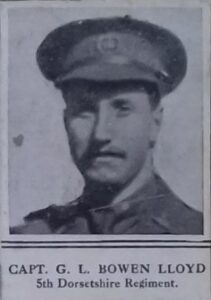
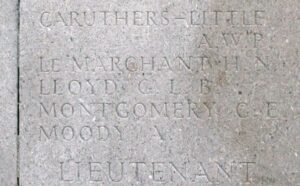
David Morgan, Private, 31896, Welsh Regiment. David was the husband of Mary Morgan, of Pontfach, Llandyssul. He enlisted at Carmarthen into the 21st Battalion, Welsh Regiment, which was a Reserve Battalion, and was training at Kinmel Park in readiness to be sent to France to join the 2nd Welsh, when he took ill and died on 9 April 1916, aged 44. He is buried in Llandyssul (St. John) Churchyard.
John Osborne, Able Seaman, Z/3613, Royal Navy. John was born on 9 November 1897, the son of Walter and Elizabeth Osborne, of 74, Moors Cottages, Crockenhill, Swanley Junction, Kent. He resided at Cwmmarch, Llandyssul prior to the war, and served with the Royal Navy, aboard the SS Madame Renee. John was drowned when the ship was sunk off Scarborough by a German U-Boat on 10 August 1918. He was just 19 years old, and is remembered on the Plymouth Naval Memorial, Devon.
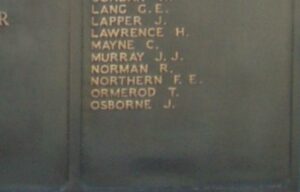
William Henry Russen, Private, 21969, Welsh Regiment. William was born in Marylebone, the son of Eleanor Russen. He had trained at an agricultural school in Kent, before moving to work at Cwmmarch, Llandyssul prior to the war. William enlisted at Llandyssul into the Welsh Regiment, and was posted to France on 17 February 1915, joining the 2nd Battalion, Welsh Regiment, which was attached to 3 Brigade, 1st Division. William saw plenty of action during his short time in France, taking part in the Second Battle of Ypres, and in the Battle of Loos on 25 September. He was slightly wounded, and returned to Cwmmarch on leave during the first week of October. On 15 October, William was working a threshing machine, when his trousers got caught up in the machinery, and had broken his leg. He was brought to Carmarthen Infirmary for treatment, but began complaining of a sore jaw, and died of lockjaw on 25 October 1915, aged 20. William was buried with full military honours in Carmarthen Cemetery.
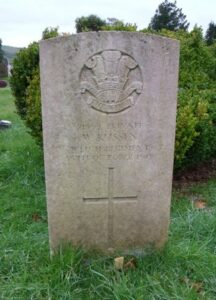
James Alexander Logan Stewart, Lieutenant, Rifle Brigade. James was born on 7 March 1893, and educated at Winchester and Trinity College, Cambridge. He was the son of Lieutenant James Logan Stewart, 7th Hussars and the Hon. Eveline Mary, of Alltrodyn, Llandyssul. James was commissioned into the Rifle Brigade on 2 September 1913, and was promoted to full Lieutenant on 30 November 1914, being sent to the front in December, 1914, where he was posted to their 1st Battalion, was attached to 11 Brigade, 4th Division. James hadn’t been on the Western Front for long, when he found himself in charge of two Platoons at Shell Trap Farm, Wieltje, during the Battle of Frezenberg. He was reported missing on 13 May 1915, and was later notified as have been killed in action that day by the Red Cross. James was only 22 years old, and is buried in Poelcapelle British Cemetery, Belgium.
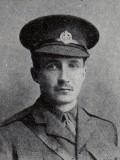
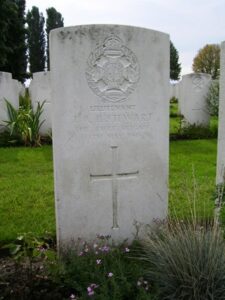
World War Two, 1939-1945
Ieuan Tom James, Sergeant, 1181333, Royal Air Force Volunteer Reserve. Ieuan was the son of David James, and of Rachel James, of Llanfihangel ar Arth. He served with 148 Squadron, Royal Air Force, which was equipped with the Vickers Wellington II, based in the Middle East at Kabrit. Ieuan was killed in action in North Africa on 19 January 1942, aged 27. He is commemorated on the Alamein Memorial, Libya.